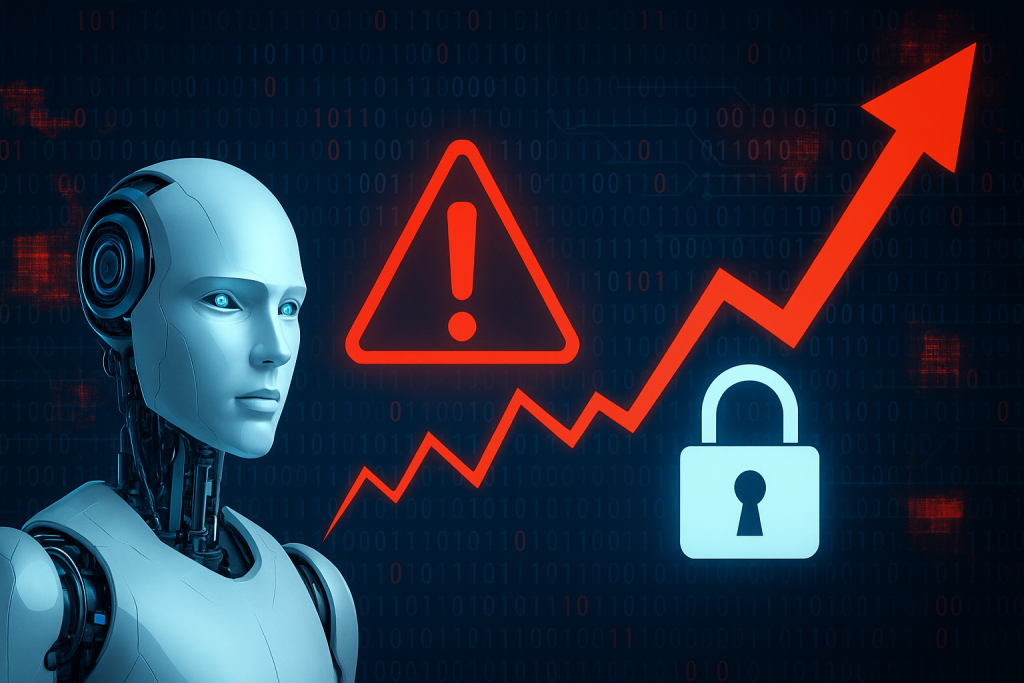Cybercriminals now wield AI tools that match state-sponsored capabilities. This shift changes everything for Indian business leaders.
Aon’s 2025 Cyber Risk Report reveals a stark reality. AI-driven cyber-attacks jumped 47% as criminals democratize sophisticated tools. The barrier to entry dropped dramatically.
“AI is no longer a future threat14it’s a present-day reality,” said Adam Peckman, head of risk consulting and cyber solutions in APAC at Aon. “We’re seeing relatively unsophisticated actors now wielding tools that rival state-sponsored capabilities. The barrier to entry has dropped dramatically, and the velocity of attacks is only increasing.”
Why It Matters Now
Traditional cybersecurity strategies fail against AI-powered threats. Attackers optimize every stage of their operations using artificial intelligence. From reconnaissance to execution, AI makes attacks faster and more precise.
Indian startups and SMBs face particular business cyber risk. Many lack a robust cybersecurity infrastructure. AI levels the playing field for attackers targeting smaller businesses.
The math is sobering. Cybersecurity Ventures estimates cybercrime will cost $15.5 trillion by 2025. If cybercrime were a country, it would rank third globally in economic size.
How AI Transforms Cyber Attacks
AI-powered social engineering represents the biggest shift. Last year, deepfake technology enabled a $25 million theft from a UK engineering firm. Similar deepfake scams now appear in Australia at smaller scales. These incidents show how accessible deepfake tools have become. Even basic attackers can create convincing fake videos and audio. Traditional training about suspicious emails becomes insufficient.
AI also automates the entire attack process. Criminals use machine learning to identify vulnerabilities. They craft personalized phishing messages using social media analysis. The human element remains the weakest security link.
Supply Chain Vulnerabilities Expand
Third-party technology providers create new attack vectors. Australian businesses suffer multiple high-profile breaches through vendor compromises. Attackers exploit weaker security at suppliers with privileged access.
“Organizations must start treating their vendors as part of their attack surface,” added Joerg Schmitz, Cyber Risk Quantification and Analytics Leader for APAC at Aon. “The most lucrative attacks are those that can be scaled across multiple targets through a single compromised supplier. This is a wake-up call for Australian businesses to reassess how they manage third-party risk.”
Indian businesses face similar risks. Cloud services, SaaS platforms, and digital partners expand the attack surface. Every vendor becomes a potential entry point. One compromised supplier can impact multiple clients simultaneously.
Strategic Advantage for Forward-Thinking Leaders
Business leaders who act now gain a competitive advantage. While others struggle with outdated security models, proactive companies build resilient operations. The shift requires fundamental thinking changes. Security moves from prevention-focused to resilience-based approaches. Companies must assume breaches will happen and plan accordingly.
AI defensive tools also emerge. Smart businesses deploy AI-powered threat detection. Machine learning identifies unusual patterns faster than human analysts. The technology arms race works both ways.
What Business Leaders Should Know
Cybersecurity becomes a business continuity issue, not just an IT concern. Attacks now target operational systems, not just data theft. Manufacturing lines stop. Financial transactions halt. Customer trust erodes quickly.
Ransomware-as-a-service lowers criminal barriers further. Attackers operate like legitimate businesses with customer support and service agreements. They target critical infrastructure including energy, healthcare, and transportation.
Quantum computing looms as a future threat. Current encryption methods may become obsolete. Forward-thinking leaders prepare for post-quantum cryptography now.
Market Impact in India
India’s digital transformation accelerates cyber risks. Rapid cloud adoption, mobile payments, and remote work expand attack surfaces. Government initiatives like Digital India increase dependency on digital infrastructure.
Startup founders face particular challenges. Limited budgets compete with security needs. However, cloud-native security tools are becoming more accessible and affordable.
SMB owners must recognize cybersecurity as a business investment, not a cost canter. A single breach can destroy years of reputation-building. Prevention costs less than recovery.
Risks and Considerations
Aon’s research analysed over 3,000 clients globally and 1,400 cyber events. The data shows that continued investment in traditional security yields diminishing returns. Attackers circumvent standard controls regularly.
Despite record cybersecurity spending, breach frequency increases. This suggests strategy problems, not resource problems. Companies need risk-based approaches that prioritize critical assets and likely attack paths. The human factor remains crucial. AI-powered social engineering exploits human psychology more effectively. Training programs must evolve beyond simple phishing awareness to deeper behavioural changes.
Business leaders cannot delegate cybersecurity entirely to IT teams. Risk management requires board-level oversight and cross-functional coordination. Cyber resilience becomes everyone’s responsibility. The window for proactive response narrows rapidly. Organizations that wait for perfect solutions will fall behind those taking measured risks with imperfect but improving AI-powered defences.


